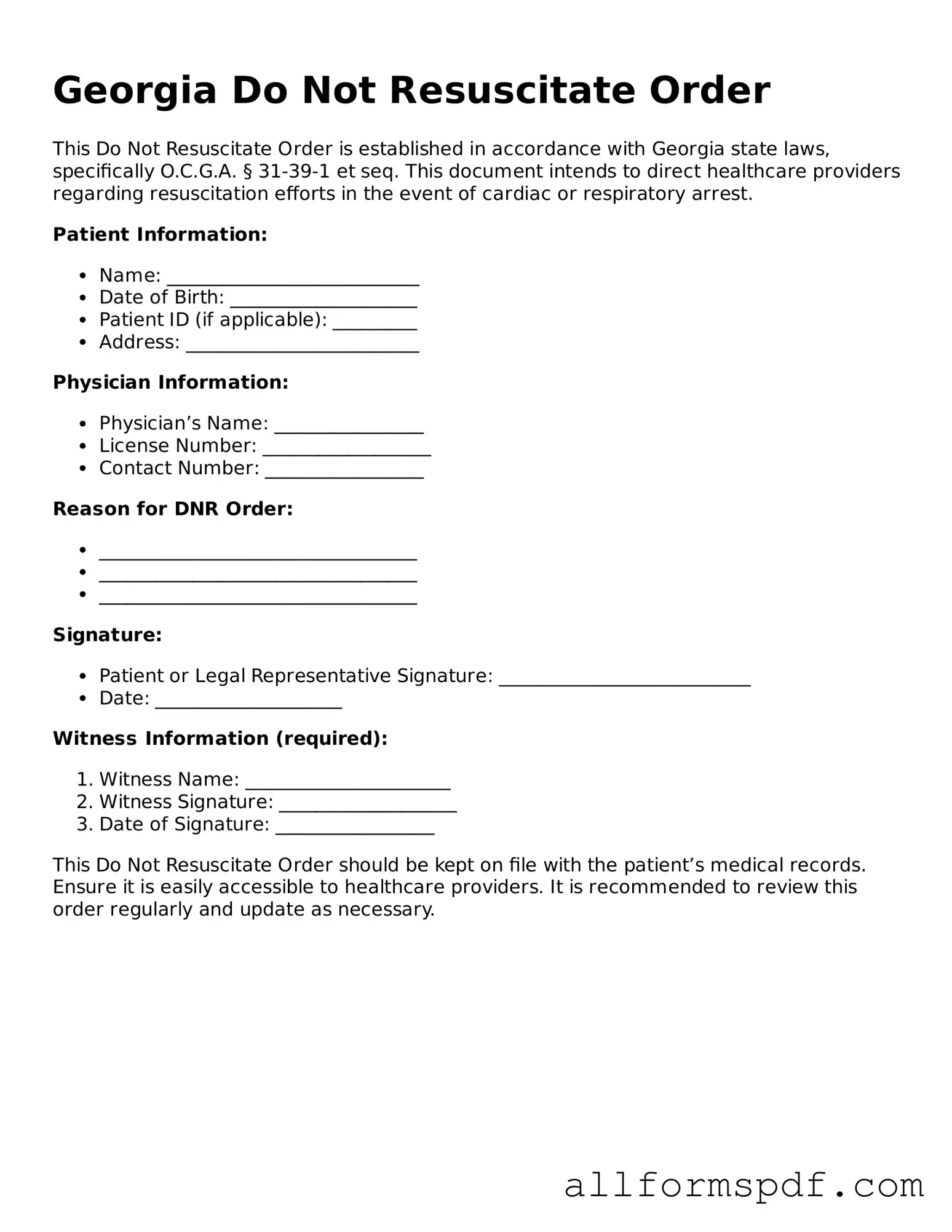Filling out a Do Not Resuscitate (DNR) Order form in Georgia is a significant decision that requires careful consideration. However, individuals often make mistakes that can lead to confusion or unintended consequences. One common error is failing to include the necessary signatures. The form must be signed by the patient or their authorized representative, and without these signatures, the order may not be valid.
Another mistake is not providing clear and specific instructions. The DNR form should clearly indicate the patient's wishes regarding resuscitation. Ambiguities can lead to misunderstandings among medical personnel, which may result in unwanted interventions. It is essential to be explicit about the desired level of care.
Many people also overlook the importance of discussing their DNR wishes with family members and healthcare providers. Without these conversations, loved ones may be unaware of the patient's preferences, leading to emotional distress during critical moments. Open communication can help ensure that everyone is on the same page and respects the patient’s wishes.
Additionally, individuals sometimes forget to update their DNR orders. Life circumstances can change, and so can a person's wishes regarding medical treatment. Regularly reviewing and, if necessary, revising the DNR order ensures that it accurately reflects the patient's current desires.
Some may mistakenly believe that a DNR order is only necessary in a hospital setting. However, it is crucial to have this documentation in place regardless of the location, whether at home, in a nursing facility, or during transport. This ensures that medical personnel are aware of the patient's wishes in any situation.
Lastly, individuals might not understand the implications of signing a DNR order. It is important to realize that this decision does not mean refusing all medical care. Patients can still receive other forms of treatment, such as pain management and comfort care. Understanding these nuances can help individuals make informed choices that align with their values and preferences.
